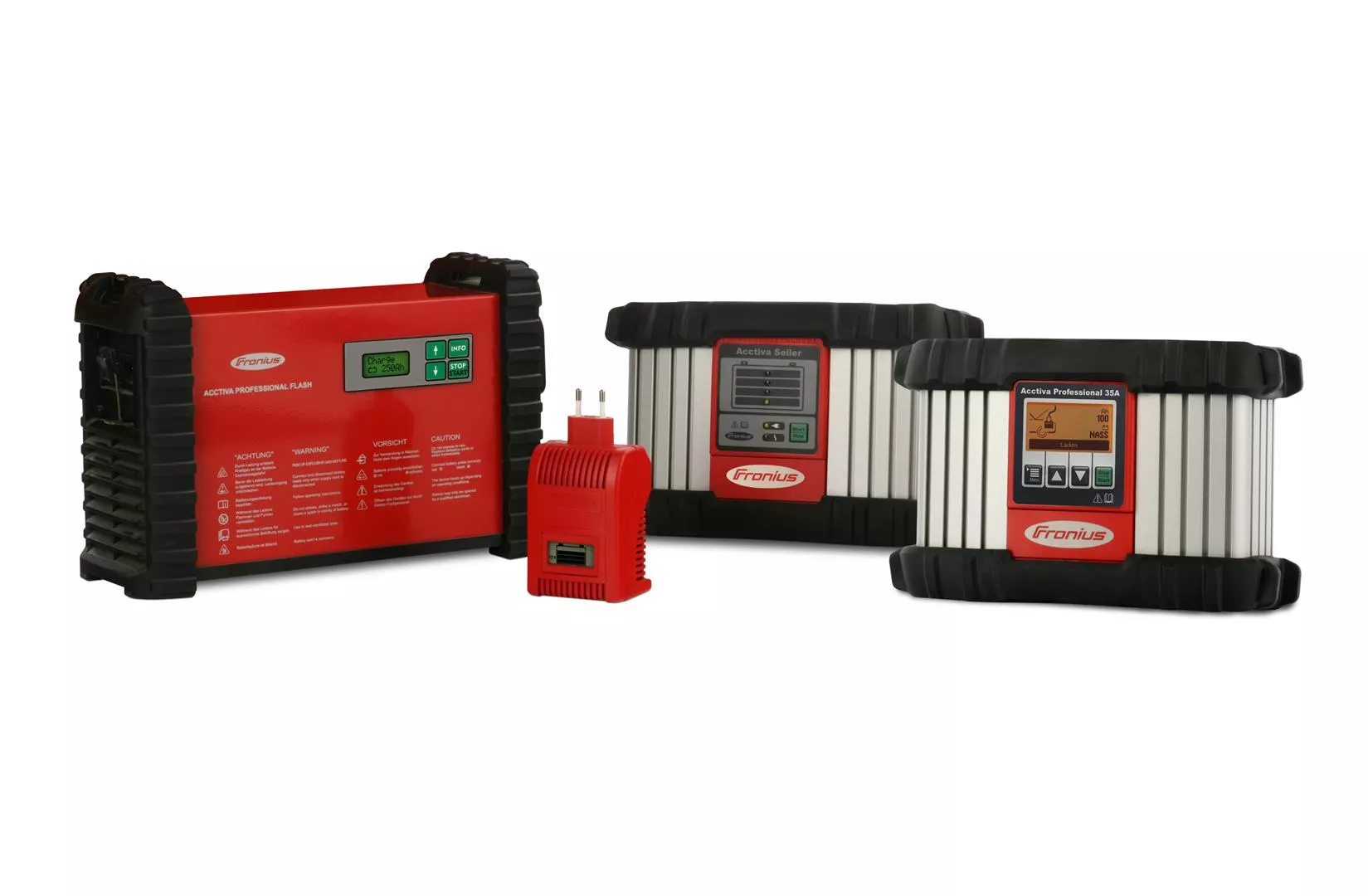Innovative charging technologyfor your starter batteries
Battery charging technology has undergone continuous further development over the years, just as starter batteries have. Nowadays, users can choose from various technologies that differ significantly in terms of output and efficiency. This has a major effect on power consumption and the capacity and service life of the batteries.
Active Inverter Technology

With Active Inverter Technology, Fronius has further developed conventional inverter (HF) technology. This process, which was first launched in 2005, combines the robustness and longevity of 50 Hz transformer technology with the efficiency of inverter technology. It also boasts a high level of flexibility.
Active Inverter Technology monitors the entire charging process and actively adapts the characteristic parameters to the pre-programmed charging characteristic. It detects the current state of charge of the battery, which it is continuously monitoring and optimising. The battery is therefore always charged extremely gently and in accordance with its state of charge, eliminating the risk of overheating as a result of overcharging. In addition, much less dirt accumulates on the surface of the battery.
The digital control circuit keeps the charging current and voltage constant during charging. Mains voltage fluctuations are automatically compensated for, meaning that the battery is charged gently. As soon as the mains voltage exceeds or falls below a specific tolerance range, the battery charging system switches off automatically. The voltage drop on the charging leads is also compensated for, reducing the charging time significantly.
Battery charging systems with Active Inverter Technology have an efficiency level of up to 96%, far exceeding all other charging technologies. This reduces the amount of electricity used and lowers energy costs. The procurement costs for the devices are quickly paid off. Using modern, compact components also keeps the dimensions and weight low, enabling them to be deployed in flexible ways. This saves valuable storage and installation space and allows for easy wall mounting.
All Fronius Acctiva battery charging systems are equipped with Active Inverter Technology. This makes them a powerful, efficient and flexible solution for charging any starter battery in a workshop or showroom.
Inverter (HF) technology
With inverter technology, the battery charging process is fully monitored throughout. The battery is charged with a constant current until a specific voltage is reached. The charger then switches to constant-voltage charging. Continuous comparisons between the target and actual charging voltage mean that fluctuations in the mains voltage can also be eliminated. The inverter technology ensures a gentler charge, resulting in significantly less warming of the battery compared to when a 50 Hz charger is used, which in turn increases its service life.
The inverter technology also achieves greater efficiency and, consequently, reduced energy consumption. These chargers can be recognised at a glance as they are roughly one-fifth smaller and considerably lighter.
50 Hz transformer technology
The main components of a 50 Hz charger are a conventional transformer that converts the mains voltage into charging voltage and a rectifier that produces DC voltage from the AC voltage in the transformer. As the mains voltage is transferred directly by the transformer, fluctuations have a direct effect on the charging voltage.
The devices charge all batteries in line with a fixed one- or two-stage characteristic. With the single-stage characteristic, the charging current responds in the opposite manner to the voltage, i.e. when the voltage increases the charging current drops. The battery charging system either does not switch off at all or only switches off after a specified time. The risk of overcharging or undercharging is thus very high, since the voltage is not regulated to the precise extent required. Fluctuations in the mains voltage have a particularly strong influence on the nature of the charging curve.
A 50 Hz charger with a two-stage characteristic switches to recharging mode during the charging process. Initially, the charging current and battery voltage increase rapidly. Over time, the capacity of the battery to accept charge drops, and the charging current is reduced accordingly. The switchover occurs when the charging current reaches a certain value. The recharging phase has a time limit, and when it ends the charger automatically switches off and stops charging.
Far better charging results can be achieved than with single-phase characteristics, since the recharging process charges the battery closer to its full capacity. This 50 Hz transformer technology is the simplest and cheapest charging technology, however, these battery charging systems have their disadvantages: they are heavy and have a poor efficiency level, which results in high energy consumption. Significant warming of the battery also occurs during the charging process, reducing its service life. Since this charging technology does not concern itself with either the age of the battery or its state of charge, it no longer lives up to modern standards.
